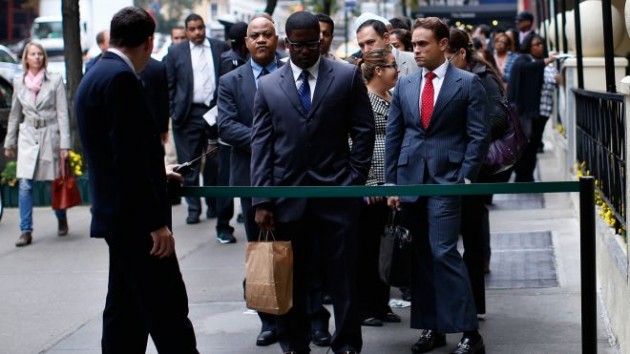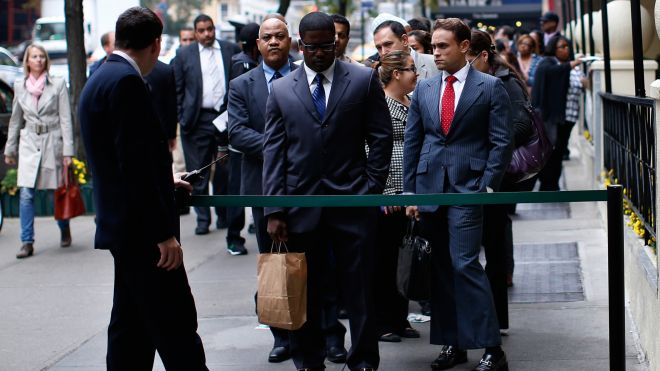

Job seekers navigate through a weak labor market and teetering economy. (Photo: REUTERS)
The number of Americans filing first-time jobless claims for unemployment benefits rose last week, but debate over underlying trends in the labor market continues.
Initial claims for state unemployment benefits increased 23,000 to a seasonally adjusted 302,000 for the week ended July 26, the Labor Department said on Thursday. However, optimists point to the four-week rolling average of claims, which is widely considered to be a more accuarte gauge of labor market trends. The four-week average irons out week-to-week volatility, and it fell 3,500 to 297,250, the lowest level since April 2006.
The prior week’s claims were revised to show 5,000 fewer applications received than previously reported. Claims for the week ended July 19 were the lowest since May 2000.
Economists polled by Reuters had forecast claims rising to 301,000. Summer automobile plant shutdowns for retooling caused greater-than-expected volatility than typically observed this time of the year. This throws off a model the government uses to adjust the data for seasonal variations.
However, pessimists point to the very credible claim that the number of Americans eligible for first-time jobless benefits has shrunk over the course of the past years. As the labor force participation rate remains low, as well as the employment-to-population ration — both of which, have been abysmal — the number of American filing for first-time jobless benefits shrinks simply due to the lack of eligible Americans.
The Labor Department said there were no special factors influencing the state level data.The
The latest economic data on GDP and job growth contradict each other, with the labor market cooling and gross domestic product showing signs of improvement. Even though the data don’t have any influence on July’s nonfarm payrolls, because it falls outside the survey window, another recent report may shed some light on the state of job creation in the U.S. economy.
According to a report released Wednesday by the payroll processor ADP, private-sector employment increased by 218,000 jobs in July from the month prior, missing the 230,000 estimate. While the economy has experienced six straight months of job creation above 200,000, the U.S. economy must at least 250,000 jobs monthly to keep pace with population growth.
The government is expected to report on Friday that payrolls increased by 233,000 in July, according to a Reuters survey of economists. But many economists remain cautious because, according to the jobs data, the labor market could continue its 5-year long trend of fizzling out after experiencing modest gains.
The month of June’s saw 288,000 jobs created, Federal Reserve officials said Wednesday that the labor market conditions are such that a “significant underutilization of labor resources” remains.
The claims report showed the number of people still receiving benefits after an initial week of aid increased 31,000 to 2.54 million in the week ended July 19.
The unemployment rate for people receiving jobless benefits held at 1.9 percent.




